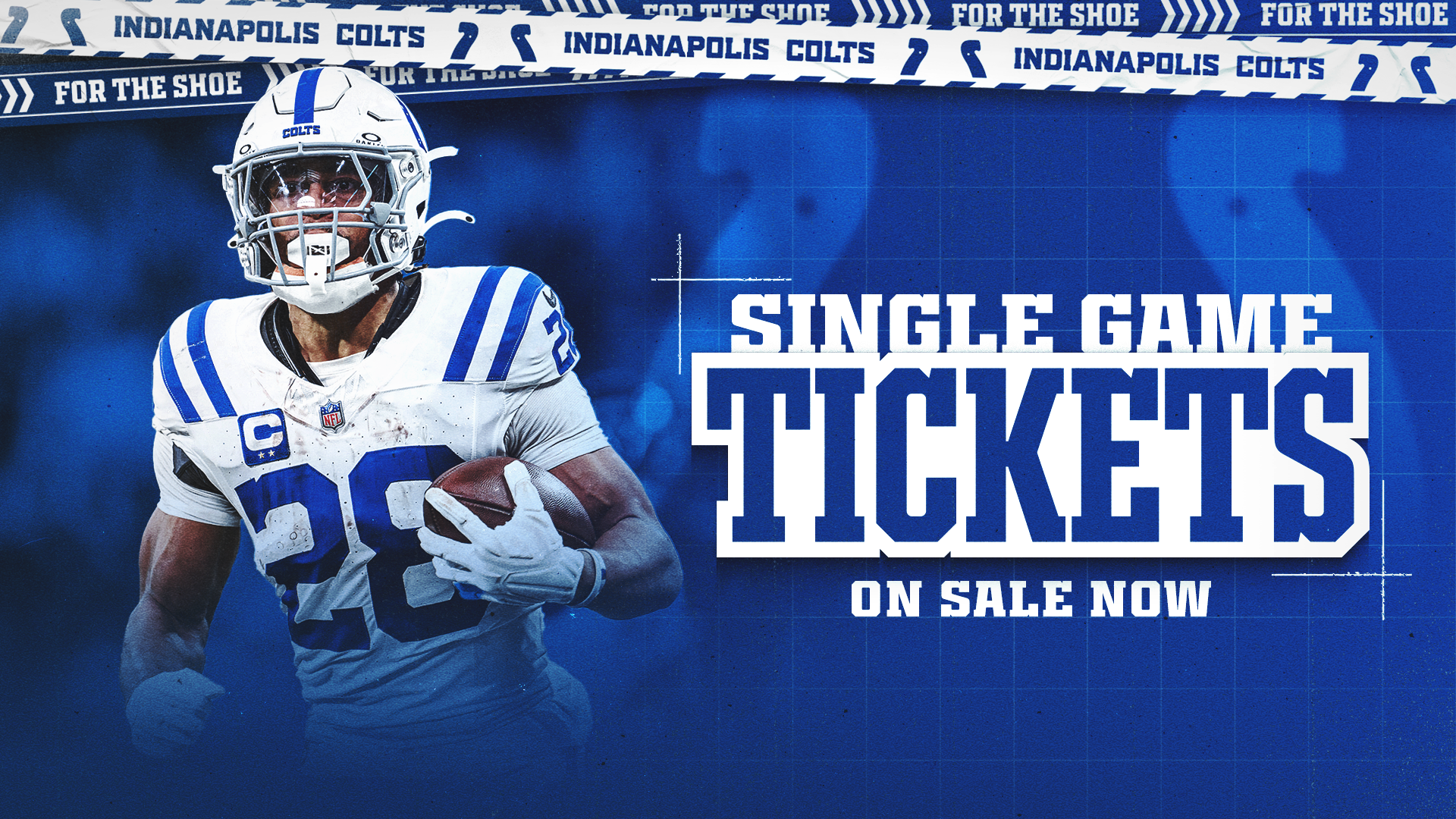1. The Colts' self-inflicted mistakes came at inopportune times.
How does a team gain 517 yards of total offense and only manage 20 points?
That's what the Colts were left to chew on in the wake of Sunday's 20-20 tie with the Houston Texans at NRG Stadium.
"When you gain those kind of yards, you got to score 40 points," head coach Frank Reich said. "You can't walk away with 20 points."
The Colts, as a whole, did a lot of good things on offense: 5.7 yards per play, 33 first downs, an average of 7.5 plays and 36.9 yards per drive. Over the last five years, teams that gained at least 33 first downs were 18-9; only one of those 27 teams scored fewer than 23 points.
So, again, how did the Colts manage to do so many good things on offense yet come away with only 20 points?
"You saw the way we moved the ball," tight end Mo Alie-Cox said. "We moved the ball well. We just didn't finish in the red area in the first half."
The Colts ran 17 plays in the red zone, including nine goal-to-go plays, over five possessions that got inside the Texans' 20-yard line. They managed two touchdowns and one field goal; the two non-scoring drives ended with a turnover on downs (when Nyheim Hines was tackled for a loss, two plays after Alec Pierce couldn't haul in a pass from Ryan in the end zone) and a missed field goal (when Rodrigo Blankenship's 42-yard game-winning attempt went wide right).
"They're a good team, but we shot ourselves in the foot a lot of times," center Ryan Kelly said.
The Colts also had three drives reach Texans territory that produced zero points. On the first, quarterback Matt Ryan was picked off by defensive end Jerry Hughes on a screen ("I've got to find a way to make that completion," Ryan said) from the Texans' 22-yard line.
The second time, Ryan was hit for a strip-sack by Hughes from the Texans' 30-yard line, losing seven yards; right tackle Braden Smith was then flagged for a false start, pushing the Colts back to the Houston 42-yard line. After Ryan thew incomplete on third and 18, the Colts punted.
And the last time, on third-and-2 at Houston's 40-yard line, the Texans recovered a fumbled exchange between Kelly and Ryan.
"It's just on me," Ryan said. "We've got to get that cleaned up, so we will. There's no doubt about that."
The Colts are confident all those mistakes are correctable, though, and set about fixing them on Monday with an eye on building on the good things – again, 33 first downs and 517 yards of offense – they did in Week 1, too.
2. Matt Ryan's leadership came through.
Ryan's leadership was tested in his Colts debut, with things going haywire down 20-3 in the third quarter. But as the game wasn't going according to plan, Ryan's teammates were able to turn to him for confidence, energy and poise – which in turn, they said, helped them erase that 17-point deficit.
"He never wavered," Kelly said. "20-3, it got a little quiet on the sideline, but then Matt's the first one there ready to go — 'Hey, let's pick it up, let's keep going.' That's the kind of player he is. That's the kind of pro he is."
The Colts already bought into Ryan's leadership during the offseason and through training camp. But seeing how Ryan led in a pressure-packed environment when things weren't going well – that brought a greater appreciation among teammates for their quarterback.
"We already knew when [stuff] got real, he was going to be real," Hines said. "He was a great leader, a great commander and is everything we could ask for."
When the Colts got in the huddle – whether it was the first half, an up-and-down second half or in overtime – Ryan's poise and calm, cool demeanor helped the other 10 guys on the field.
"It's great to be with a leader where you always have a plan, and no matter what the situation is, we have a plan because it's just another play," Hines said. "That's how he treats it."
There's a reason why Ryan is one of nine quarterbacks in NFL history to have more than 30 fourth quarter comebacks in his career (the others: Peyton Manning, Tom Brady, Ben Roethlisberger, Drew Brees, Matthew Stafford, Johnny Unitas, Dan Marino and John Elway). While the Colts didn't win on Sunday, they learned that no matter the score, Ryan will be the same guy – and has what it takes to pull his team back into a game.
"It's a great feeling to know how we could storm back with 10 or 11 minutes left," Hines said. "That's amazing to see that we can come back down (17) and have a chance to put ourselves in the game, because a lot of times you put yourself in that position, you can't win."
3. Gus Bradley brought the heat.
One of the more intriguing unknowns heading into Sunday's game was how Gus Bradley would scheme the defense in his Colts debut. The Colts showed nothing – nothing – on defense in the preseason, after all.
One thing stood out: The Colts dialed up 15 blitzes over 70 defensive snaps.
The last time a Bradley defense blitzed that much was Week 2 of the 2018 season, when he was the Los Angeles Chargers' defensive coordinator. And the way the Colts blitzed was varied and unpredictable – Kenny Moore II had some from the slot, while there were a few where a linebacker blitzed.
The Colts sent two-man blitzes twice in the fourth quarter, both resulting in Davis Mills incompletions – the latter of which was nearly picked off by cornerback Stephon Gilmore.
And the biggest home run on a blitz also came in the fourth quarter, when linebacker E.J. Speed rushed off the edge and linebacker Zaire Franklin blitzed from depth. Defensive end Kwity Paye knifed inside at the snap, occupying the left guard and leaving left tackle Laremy Tunsil to choose between blocking Franklin or Speed. He went to Franklin, and Speed got a free run at Mills, thumping him for a strip-sack the Colts recovered and turned into a touchdown a few plays later.
The amount of blitzing the Colts did in Week 1 will not necessarily be a week-in, week-out thing, Reich said. But it can be another wrinkle to put a seed of doubt in opponents' minds when facing the Colts' defense.
"Gus and I have had those conversations," Reich said. "I feel very confident and comfortable with his mindset, his plan and how he and the staff are working together to do that."
4. The Colts' run defense was outstanding.
The Texans gained 77 yards on 28 carries (2.8 yards/attempt) and didn't have a run longer than eight yards. Also: only one of Houston's 28 runs ended with a tackle by a Colts safety – meaning the front seven almost always got to the rusher first.
Key in those efforts was defensive tackle Grover Stewart, who registered two tackles for a loss and was a force in the interior of the Colts' defense.
One of those TFLs came in a massive moment in overtime. With 40 seconds left and the Texans facing a third and 1 on the Colts' 47-yard line, Stewart beat center Justin Britt across his face at the snap, then kept his balance to envelop running back Rex Burkhead for a loss of two.
"For him to come up huge and get that stop, they would've got that first down," defensive end Kwity Paye said. "And throughout the course of the game he was doing his thing, doing Grove things. It's definitely great to have Grove on our side."
5. Kwity Paye came up big in a critical spot, too.
Paye led the Colts with four total pressures, but none were bigger than the pair of sacks he had on first and third down to open overtime. On the first one, Paye used his power to drive tight end Pharoah Brown back into Mills' lap, then brought the Texans' quarterback down as he stepped up in the pocket.
And on the second, the Colts rushed three and dropped eight deep (it was third and 22); Paye was chipped by tight end Brevin Jordan off the snap and then did his best Dwight Freeney impression on right tackle Tytus Howard, hitting him with a vicious spin move and chasing Mills down for a sack.
Paye said he decided to use that spin move when he was chipped by Jordan, which allowed him to win to Howard's inside and sack Mills.
Paye had four sacks as a rookie, and the Colts were encouraged by what he showed in 2021. And with two big-time plays in big-time situations, Paye's Year 2 is off to an encouraging start.
















